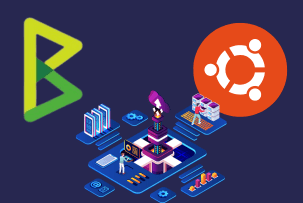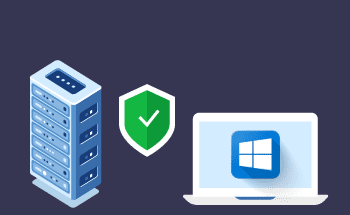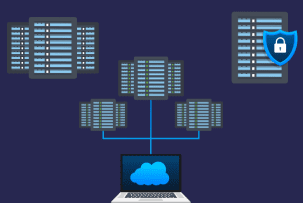What you need to know about the remote server
21:52, 20.03.2020
The remote server is a web application that receives and processes user requests through the Internet. In most cases, users connect to such servers through the RRAS service( a routing and remote access service). A company can implement such system on its own or rent the corresponding servers from a hosting provider. The concept of “remote server” was first introduced by Microsoft. It was this company that started using this feature in their Windows NT operating systems for joint collaboration between employees.
Areas of use of remote servers
Remote servers can be used for almost any task. However, nowadays, this technology is used to host databases, which can simultaneously connect a large number of users. Moreover, you can do this from any corner in the world. The user's location is not critical, the only thing that is important is the speed of Internet connection.
Also, remote servers are often used by Internet providers and large companies with geographically separated offices.
Remote Server Modes
Cloud remote servers can operate in two different modes:
- Remote control
- Remote network access
In the first case, the user can fully control the server to which he is connecting. This function is also called a terminal server. In the “remote network access” operating mode, clients connect to the server as if they were connected to the same local network. It is particularly crucial not to confuse remote access with management. Remote access occurs through a software router using special network protocols. However, in the case of remote control, you can share the monitor, mouse, keyboard and so on with other users.
How the connection is conducted
By default, the connection to the remote server is conducted through the special RDP protocol, which stands for Remote Desktop Protocol. It was popularized by the same Microsoft company, which recommended this protocol for organizing any remote work. The client application for these purposes is designed for all popular operating systems - Windows, Linux, Mac OS, iOS and Android. For example, in Windows 10 the application is called “Remote Desktop Connection”.
What to consider when choosing a remote server
There is a number of important points that should be considered when choosing a remote server. We will briefly explain each of them:
- Performance and reliability - always pay attention to what software is used to exchange data between the server and workstations. Also make sure you have a stable communication channel with good bandwidth.
- Convenience and simplicity of service - the simpler the server maintenance, the better. This point can be omitted only by those companies that have an experienced system administrator in their staff.
- Functionality - the presence of additional intelligent functions can greatly facilitate the user’s work with a virtual server. For example, such functions include the authorization process, automatic statements or resource accounting.
- Possibility of upgrade - modern technologies are developing very quickly. Keep this in mind and consider the ability to scale the server. Also make sure that the application software for the user will have appropriate support, and will not lose its relevance in a few months.
As a conclusion, we note that in cases where there is no direct need for a remote server, you should consider VPS / VDS servers, for example, netherlands vps. They are a kind of emulators of physical machines in the data center. They primarily differ in the types of virtualization. To get more information on what type of virtualization to choose in a situation given, we wrote in a separate article earlier. In addition, you can always rent suitable virtual servers on our site hostzealot.com, after consultations with our specialists.


